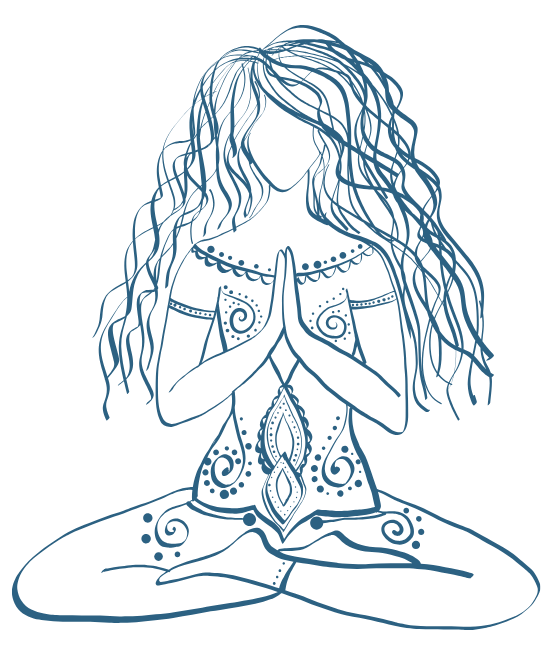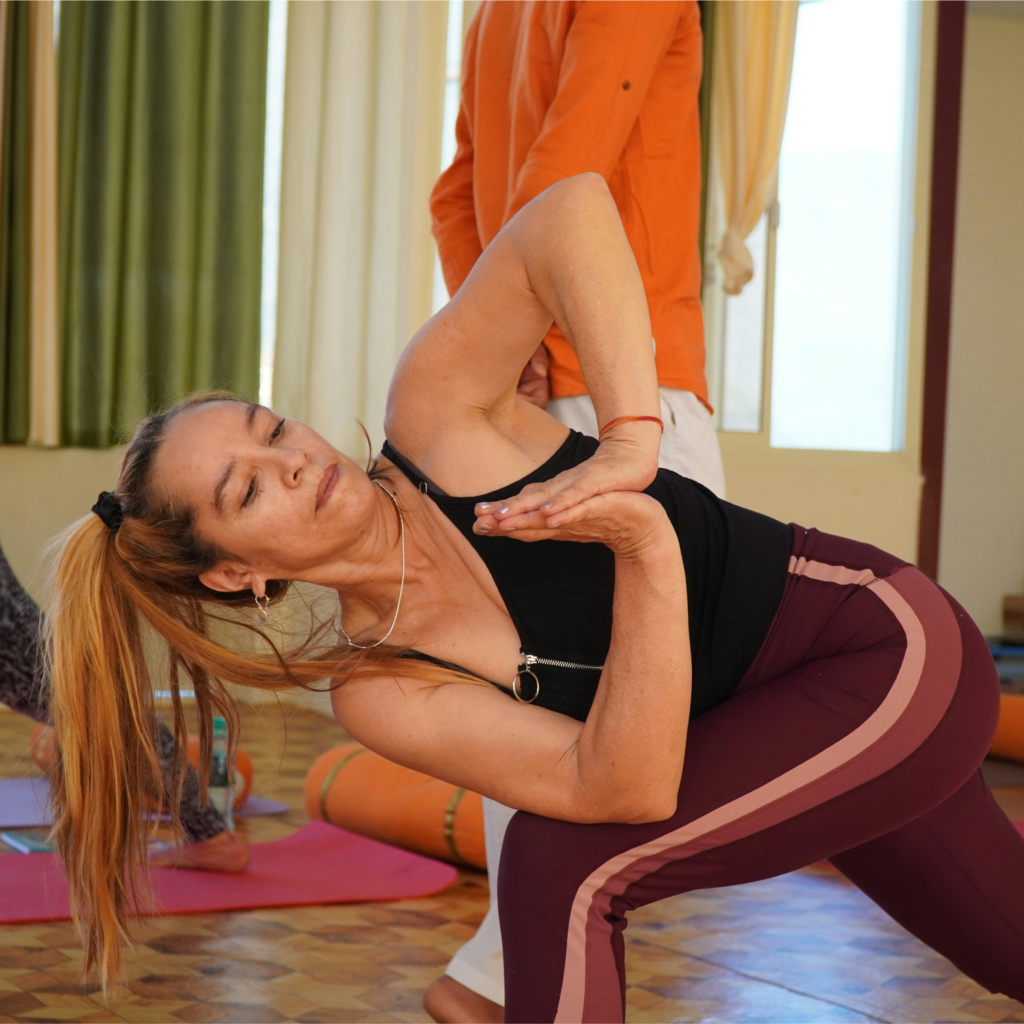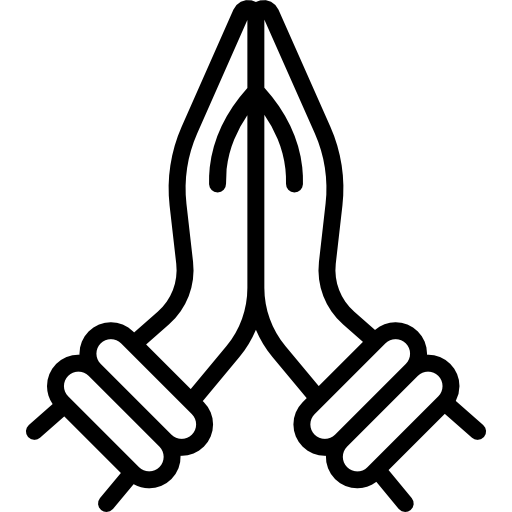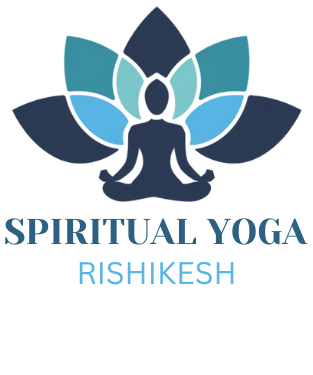- Free Pickup from Dehradun Airport
- Free Sound Healing or Reiki Session
- Free Ayurveda Massage
Join us for the ultimate experience of a lifetime
500 Hour Yoga Teacher Training Course in Rishikesh

- Curriculum
- Schedule
- Dates
- Accommodation
- FAQs
AdvancedCourse For Yoga
500 Hour Yoga Teacher Training In Rishikesh
The 500 Hour Yoga Teacher Training in Rishikesh is an intensive, life-changing program designed for passionate yoga practitioners who wish to dive deeper into the ancient science of yoga and elevate their practice and teaching to an advanced level. Combining both the 200 Hour and 300 Hour Yoga Teacher Training into one comprehensive course, this program provides a complete understanding of yoga in its most authentic and traditional form. Rishikesh, known as the Yoga Capital of the World, offers the perfect setting for such a journey, with its sacred atmosphere, serene Himalayan backdrop, and the tranquil flow of the holy Ganga River creating a truly inspiring environment for self-growth.
This 500 Hour YTT is suitable for dedicated students and aspiring yoga teachers who are ready to explore yoga beyond the physical postures. The course includes in-depth training in Hatha Yoga, Ashtanga Vinyasa, pranayama (breathing techniques), meditation, yoga philosophy, anatomy, alignment, adjustment techniques, and teaching methodology. Special emphasis is placed on developing a deep personal practice while learning how to guide others with confidence and compassion.


Throughout the training, experienced Indian and international teachers provide personalized guidance, helping students refine their practice and understanding of yoga as a holistic lifestyle. The curriculum is designed to meet the international standards set by Yoga Alliance, enabling graduates to register as RYT-500 certified teachers and teach worldwide.
More than just a teacher training, the 500 Hour Yoga TTC in Rishikesh is an opportunity to experience personal transformation, spiritual growth, and a deeper connection to oneself. Students not only improve their physical strength and flexibility but also cultivate mental clarity, inner peace, and a profound understanding of yoga’s spiritual roots. It is truly a complete journey for the body, mind, and soul.
What Comes With This Course?
Why Choose Our 500 Hour Yoga TTC in Rishikesh?
- Authentic Yogic Experience in the Yoga Capital
Rishikesh is the birthplace of yoga, surrounded by the serene Himalayan foothills and the holy Ganges River, offering the perfect environment for deep practice and self-discovery.
- Experienced & Certified Instructors
Our teachers are Yoga Alliance-certified, with years of experience in Hatha, Ashtanga, Vinyasa, Pranayama, and Meditation, ensuring high-quality learning. deep practice and self-discovery.
- Comprehensive Curriculum
- Traditional Hatha & Ashtanga Yoga
- Pranayama & Breathwork Techniques
- Meditation & Mindfulness Practices
- Anatomy & Physiology Basics
- Yoga Philosophy & Ethics
- Alignment & Adjustment Techniques

- Small Batches for Personalized Attention
We maintain small class sizes to ensure every student gets personalized guidance and correction.
- Holistic Learning Approach
Beyond physical postures, our TTC includes Ayurveda, Yogic Lifestyle, and Mantra Chanting, making it a well-rounded program.
- Ideal for Beginners & Intermediate Practitioners
If you are new to yoga or want to deepen your practice without committing to a full 200-hour course, our 100-hour TTC is perfect.
- Yoga Alliance Certification & Future Growth
After completing this course, you can continue with another 100 hours to achieve a full 200-hour Yoga Alliance certification.
- Spiritual & Cultural Immersion
Rishikesh is home to ancient temples, ashrams, and the divine energy of the Ganges, making your training a soulful and enriching experience.
- Post-Training Support
Our relationship doesn’t end after the course. We provide guidance and support for your yoga journey ahead.

Asana Practice (Postures)
Learn traditional Hatha and Vinyasa Flow yoga, focusing on proper alignment, balance, and breath control to enhance flexibility and strength.

Pranayama (Breathing Techniques)
Master breath control techniques like Nadi Shodhana, Bhastrika, and Kapalabhati to improve energy flow, lung capacity, and mental clarity.

Meditation & Mindfulness
Practice different meditation techniques such as guided meditation, Yoga Nidra, and silent meditation to cultivate inner peace and focus.

Yoga Philosophy
Explore ancient yogic wisdom from Patanjali’s Yoga Sutras, Bhagavad Gita, and Upanishads to understand the deeper aspects of yoga beyond physical postures.

Anatomy & Physiology
Gain knowledge about muscles, joints, and the nervous system, enabling a safer and more effective yoga practice.

Teaching Methodology
Learn the basics of teaching, including class sequencing, cueing, hands-on adjustments, and voice modulation to guide students effectively.

Mantra Chanting & Sound Healing
Experience the power of mantras, Sanskrit prayers, and sound vibrations to elevate spiritual energy and focus.

Ayurveda & Yogic Lifestyle
Understand Ayurvedic principles, yogic diet, and daily routines for overall well-being and balance.

Self-Practice & Teaching Practicum
Develop confidence by practicing yoga independently and leading small group sessions under expert guidance.
This Course Highlights

TEACHER TRAINING FOR 500 HOURS
Get the teacher training manual on arrival

45 DAYS ON LOCATION
Explore Rishikesh, the soul of Yoga

YOGA TEACHER CERTIFICATION
Get the teacher training manual on arrival

ALL-INCLUSIVE PACKAGES
Food and Accommodation

OVER A DECADE OF EXPERIENCE
14+ years of experience and excellence in Yoga

CLASSES WITH MORE FOCUS
Each class with a group of maximum 15-20 students
Full Syllabus For This Course
Syllabus of 300 Hour Teacher Training in Rishikesh
Our 500-Hour Yoga Teacher Training in Rishikesh is designed to provide a strong foundation in traditional yoga practices, combining ancient wisdom with modern teaching methodologies. The syllabus includes in-depth training in asanas, pranayama, meditation, and yogic philosophy, ensuring a transformative experience for all students.
Hatha Yoga – Classical Yoga Practice
Hatha Yoga focuses on balancing the body and mind through physical postures (asanas). This training covers proper alignment, benefits, modifications, and variations of key asanas, helping students develop flexibility, strength, and balance while deepening their personal practice.
- Svastikasana (Auspicious Pose)
- Gomukhasana (Cow-Facing Pose)
- Virasana (Hero’s Pose)
- Kurmasana (Tortoise Pose)
- Kukkutasana (Cockerel or Rooster Pose)
- Uttana Kurmasana (Tortoise Pose)
- Dhanurasana (Bow Pose)
- Matsyendrasana (Seated Twisting Pose)
- Paschimatanasana (Seated Forward Bending Pose)
- Mayurasana (Peacock Pose)
- Shavasana (Corpse Pose)
- Siddhasana (Accomplished Pose)
- Padmasana (Lotus Pose)
- Simhasana (Lion Pose)
- Bhadrasana (Throne Pose)
Ashtanga Vinyasa – Dynamic Yoga Practice
Ashtanga Vinyasa is a structured and energetic style of yoga. Students will be guided through the Primary Series, focusing on breath coordination, postural alignment, and dynamic movement to build strength, endurance, and flexibility.
- Surya Namaskar A
- Surya Namaskar B
- Padangusthasana
- Padahastasana
- Utthita Trikonasana
- Parivrtta Trikonasana
- Utthita Parsvakonasana
- Parivrtta Parsvakonasana
- Prasarita Padottanasana A, B, C & D
- Parsvottanasana
- Utthita Hasta Padangusthasanaa A, B & C
- Ardha Baddha Padmottanasana
- Utkatasana
- Virabhadrasana A & B
- Dandasana
- Paschimottanasana A, B & C
- Ardha Baddha Paschimottanasana
- Triang Mukhaikapada Paschimottanasana
- Janu Sirsasana A, B & C
- Marichyasana A, B, C & D
- Navasana
- Bhujapidasana A & B
- Kurmasana
- Supta Kurmasana
- Garbha Pindasana
- Kukkutasana
- Baddha Konasana A & B
- Upavistha Konasana A & B
- Supta Konasana A & B
- Supta Padangusthasana
- Ubhaya Padangusthasana
- Purvottanasana
- Urdhva Mukha Paschimottanasana
- Setu Bandhasana
- Urdhva Dhanurasana
- Salamba Sarvangasana
- Halasana
- Karnapidasana
- Urdhva Padmasana
- Pindasana
- Matsyasana
- Uttana Padasana
- Sirsasana
- Urdhva Dandasana
- Yoga Mudra
- Utplutih
- Savasana
Pranayama – The Art of Breath Control
Pranayama, or breath regulation, is a vital part of yoga that enhances vitality and mental clarity. Students will learn essential breathing techniques such as Nadi Shodhana (Alternate Nostril Breathing), Bhastrika (Bellows Breath), Kapalabhati (Skull Shining Breath), and Ujjayi (Ocean Breath) to purify the body and mind while increasing energy levels.
- Introduction Of Pranayama
- Benefits Of Pranayama
- Pranayama And Lifestyle
- Types Of Breathing
- Sitting Posture For Pranayama
- Nadishodhana Pranayama
- Sheetali Pranayama
- Sheetkari Pranayama
- Bramari Pranayama
- Ujjayi Pranayama
- Bhastrika Pranayama
- Kapalbhati Pranayama
- Surya Bheda Pranayama
- Chandra Bheda Pranayama
- Introduction To Yoga Mudras
- Jnana Mudra
- Chin Mudra
- Yoni Mudra
- Ashwani Mudra
- Nasikagra Mudra
- Preparation For Bandha
- Benefits Of Bandha
- Mula Bandha
- Jalandharabandha
- Uddiyanabandha
Yoga Philosophy – The Wisdom of Ancient Texts
Students will explore the Yoga Sutras of Patanjali, the Eight Limbs of Yoga, Yamas & Niyamas, and the Bhagavad Gita to understand the deeper essence of yoga beyond the physical postures. The course also covers ethical guidelines for a yogic lifestyle.
- Introduction To Yoga And Its Evolution
- What Is Darsan
- Evolution Of Nature
- Introduction To Yoga Sutra
- Yogic Discipline
- Patanjali’s Definition Of Yoga
- How To Achieve Goal Of Yoga
- Concept Of Iswara
- Importance Of Aum
- Concept Of Kleshas
- Ashtanga Yoga
- Introduction Of Bhagwat Gita
- Karma Yoga
- Bhakti Yoga
Alignment and Adjustment
When practicing certain yoga postures, it’s common to feel some strain or tension in your muscles—this is completely normal. Whether you’re new to yoga or have years of experience, it’s possible to experience sharp or sudden discomfort in specific poses, which can sometimes lead to minor injuries. But don’t be alarmed! This is why alignment-focused classes are an essential part of yoga training.
So, what exactly is an alignment class? In these sessions, you’ll be guided on how to perform each asana with correct body positioning and awareness, helping you gain the full benefits of the posture while significantly reducing the chance of injury. These classes also encourage the use of props and pose modifications, making yoga accessible and safe for every body type and flexibility level. Once you understand alignment principles, you’ll be able to adapt and refine any posture to suit your individual needs—making your practice safer, more effective, and more rewarding.
- Samasthithi
- Trikonasana
- Parivirta Trikonasana
- Parsavkonasana
- Parivirta Parsavkonasana
- Ardha Chandrasana
- Parivirta Ardha Chandrasana
- Virbhdrasana 1, 2, 3
- Dandasana
- Paschimotasana
- Purvottanasana
- Janu Sirsasana
- Ardha Matsyendranath Asana
- Santoolan Asana
- Chaturanga Dandasana
- Adho Mukha Swanasna
- Bhujanghasana
- Titli Asana
- Chakrasana
- Dhanurasana
- Sarvangasana
- Halasana
- Matsyasanad
- Sirsasana A, B
- Pinch Mayurasana
- Adho Mukha Vriksasana
- Bakasana
- Ek Pada Bakasana
- Parsva Bakasana
- Eka Pada Koundinyasana 1, 2
- Titibasana
- Assistence Of Ashtanga Jumps
- Bhramcharya Asana
Kriya and Shatkarma – Yogic Cleansing Techniques
Pranayama, or breath regulation, is a vital part of yoga that enhances vitality and mental clarity. Students will learn essential breathing techniques such as Nadi Shodhana (Alternate Nostril Breathing), Bhastrika (Bellows Breath), Kapalabhati (Skull Shining Breath), and Ujjayi (Ocean Breath) to purify the body and mind while increasing energy levels.
- Neti – It is a nasal cleaning process which is basically done by a neti pot using lukewarm water .
- Dhauti – It is an alimentary canal cleansing process which eliminates impurities from the digestive tract.
- Basti – Basti is the Shatkarma process for the cleansing of the colon.
- Trataka – It is a shatkarma gazing practice which is helpful in improving vision and curing headaches.
- Nauli – It is an abdomen cleansing process which is done by massaging the stomach muscle in a clockwise and then anti-clockwise direction.
- Kapalbhati – It is also known as “Shining Skull” done by inhalation and exhalation.
- Jala Neti
- Rubber Neti
- Kunjal
- Danda Dhauti
- Nauli Kriya
- Shankhaprakshalana
Yoga Anatomy and Physiology
The study of anatomy and physiology in yoga provides valuable insight into how this ancient practice benefits the muscles, bones, and overall bodily systems. It explores how different yoga postures affect various body structures and help overcome physical limitations.
Anatomy is the scientific study of the structure of living organisms. In the context of yoga, it helps you gain a clear understanding of the body’s internal framework and how each posture influences joints, muscles, and bones. You’ll learn how different layers of the body interact—physically, mentally, and energetically. Yoga anatomy offers practical knowledge about muscles, tissues, organs, and their roles during movement and stillness.
Physiology, on the other hand, is the study of how the body functions. It dives into the cellular and molecular processes that keep us alive. In yoga training, physiology helps explain how asanas, breathwork (pranayama), and meditation influence the body’s systems—enhancing circulation, digestion, respiration, and overall health. In short, anatomy and physiology together form the foundation for practicing and teaching yoga safely and effectively, with a deeper understanding of the body’s natural intelligence.
- Introduction to Yoga Anatomy and Physiology
- Organization of the Human Body
- 5 Important Levels of Body Organization
- 11 Major Systems of the Human Body
- Anatomy and Physiology of the Skeletal System
- Joints of the Human Body and their Functions in Yoga
- Overview of Ligaments, Tendons and Cartilage
- Anatomy of Human Vertebral Column
- Introduction to Spinal Deformities, Scoliosis, Lordosis and Kyphosis and their Cure with Yogic Practices
- Major Muscle Groups in the Human Body and their Physiology in Yoga Practices
- Muscle Bone Relationship with Yoga
- Preparation of Yoga Sequences for Specific Muscles Groups
- Anatomy and Physiology of Respiratory System
- Asana and Pranayama Practices to Improve the System of Prana
- Anatomy and Physiology of Cardiovascular System
- Role of Inversions in Circulation
- Functioning of the Human Heart, Blood Pressure and Yoga Relationship
- Yoga and Pranayama to Improve Circulation of Blood in the Body
- Anatomy and Physiology of the Shoulder
- Bones and Muscles of Shoulder Joints
- Shoulder Opening Yoga Sequence Preparation
- Rotator Cuff Muscles and their Role in Yoga Posture
- Anatomy and Physiology of Digestion
- Food Types and their Effect on the Human Body
- Anatomy and Physiology of Glands in Human
- Location of Glands and Hormones and the Chakras Associated with them
- Structure of the Pelvic Area
- Study of Bones and Muscles of the Pelvis, Hip Flexors, Adductors and Adductor Muscles
- Pelvis Opening Yoga Sequencing
- Thoracic Section Opening Sequencing
- Anatomy of the Nervous System and its Physiological Relevance in Yoga
- Reflex Actions, Sensory and Motor Neurons and Parasympathetic Nervous System
- Knee Anatomy and Physiology
- Overview of MCL, LCL, ACL, PCL And their Role in Balancing Posture
- Introduction to Immune System Physiology
- Anatomy and Physiology of Shatkarma
- Anatomical Sequencing of Yoga Poses to Avoid Injuries During Asana Classes
- Anatomy and Physiology of Pranayama Practices
- Diaphragmatic Movement, Intercostal Muscle Movement and Lung Capacity
Yoga Nidra and Meditation –Yogic Sleep and Conscious Relaxation
Meditation is a core aspect of Yoga that brings deep relaxation by quieting the mind and calming the nervous system. Developing strong meditation skills is essential for maintaining mental clarity and emotional balance. Regular meditation practice can significantly reduce stress and help you tap into your full inner potential.
In today’s fast-paced world, issues like anxiety and depression have become increasingly common, often disrupting our daily lives. Meditation offers a natural way to restore mental well-being and bring harmony back into our routines. It’s important to understand that meditation isn’t just about sitting still with your eyes closed. It can also involve being fully present—whether that’s by observing your breath, listening to the sounds of nature, or simply resting in stillness. True meditation begins when the mind becomes completely absorbed, and external distractions fade away. That is the state of dhyana, a deep and undisturbed meditative awareness.
- Introduction to Meditation
- Meaning of Meditation
- Meditation definition
- Importance of Meditation in modern time
- Different kinds of meditation: Active meditation and silent meditation
- Preparation for Meditation: Lifestyle and Right attitude towards Meditation
- Kaya sthairyam (Body steadiness)
- Breath awareness meditation
- Ajapa Meditation
- Trataka Meditation
- Aum meditation
- Japa Meditation
- Yoga nidra Meditation
- Yoga nidra advanced practice for emotion
- Deep sleep and turiya sleep
- Yoga nidra as a tantric practice
- State of self in yoga nidra
- Chakra meditation
- Sound meditation
- Four traditional meditative postures
- Prana meditation technique
Mantra Chanting – The Power of Sacred Sounds
Mantra chanting is an ancient technique that enhances focus and spiritual connection. Students will learn traditional Sanskrit mantras such as Om, Gayatri Mantra, and Mahamrityunjaya Mantra, along with their meanings, pronunciation, and vibrational effects on the mind and body.
- Opening mantra
- Om chanting
- Gayatri Mantra
- Guru Vandana (prayer to Guru)
- Student and master mantra
- Patanjali mantra (ashtanga mantra)
- Completeness mantra
Kundalini Yoga – Awakening Inner Energy
This session focuses on chakra activation, kriyas, pranayama, and meditation techniques to awaken Kundalini energy and promote spiritual growth. Students will learn how to harness and balance this powerful energy safely.
- History – Kundalini Yoga Practices
- Founder – Kundalini Yoga
- How Kundalini yoga differs from other yoga practices
- What is not included in kundalini yoga?
- Misunderstanding and Misconceptions about kundalini yoga
- Kundalini yoga in different traditions and perspectives of the world
- Is it safe to practice kundalini yoga from any of the yoga teachers and schools?
- How to find a true guru for Kundalini Yoga?
- Different Traditions of Kundalini yoga
Teaching Methodology & Adjustment – Becoming a Skilled Yoga Teacher
This module is designed to equip students with the skills to become confident yoga instructors. Topics include class sequencing, voice modulation, hands-on adjustments, use of props, and creating a safe learning environment to effectively teach yoga classes.
- Positive & conscious communication, Friendship and trust
- Time management
- Qualities of a teacher
- Principles of demonstrating observation
- Assisting
- Correcting
- Use of voice in class
- Mental & emotional preparation for teaching
- Class preparation
- Step by step class structure planning
Ayurveda – The Science of Life
Ayurveda is the ancient Indian system of natural healing. This module introduces students to doshas (body constitutions), Ayurvedic diet, seasonal routines, and herbal remedies to promote holistic health and wellness
- Introduction to Ayurveda
- Unique Features of Ayurvedic Treatment
- Ayurveda and Its Diversified Areas
- Ashtanga Ayurveda
- Fundamentals of Ayurveda
- Panchamahabhuta
- Kapha (The theme of structure and lubrication)
- Vata (the energy of movements)
- Pitta (the energy of bio-transformation and heat generation)
- Prakriti- Know Your Constitution

